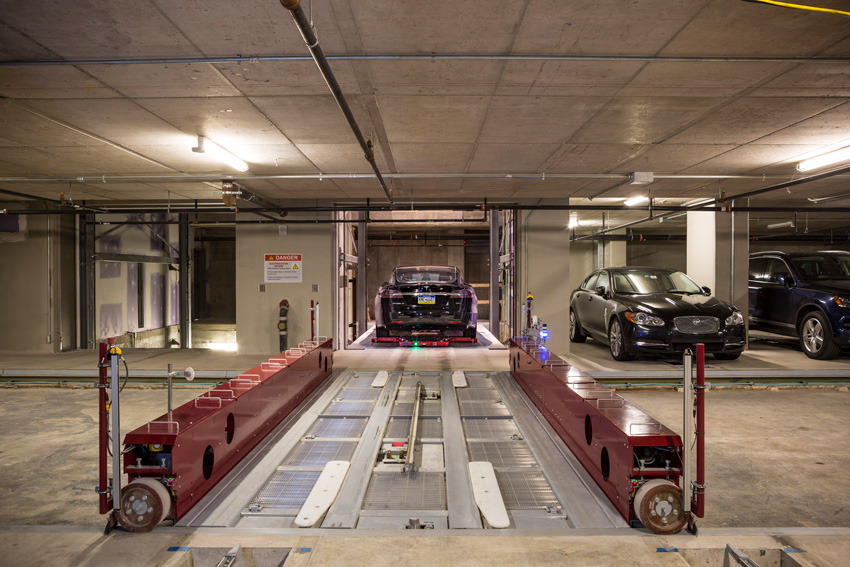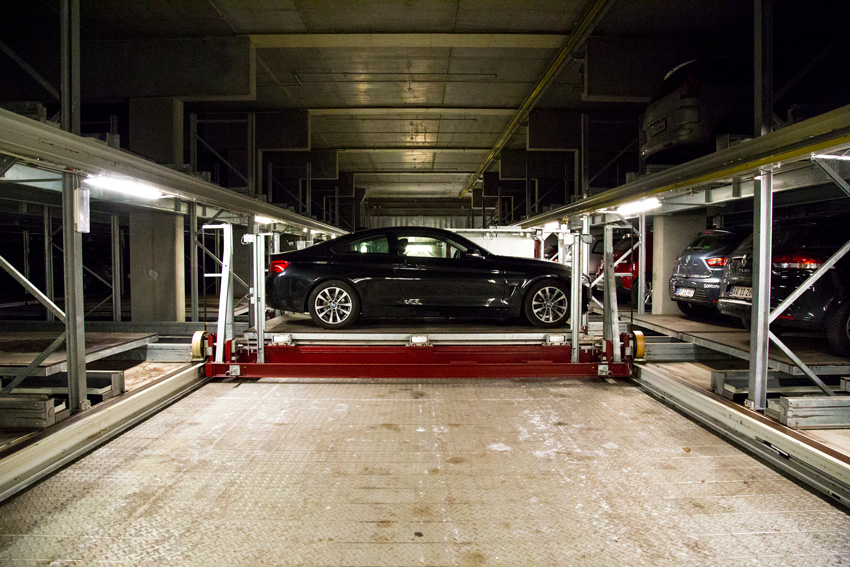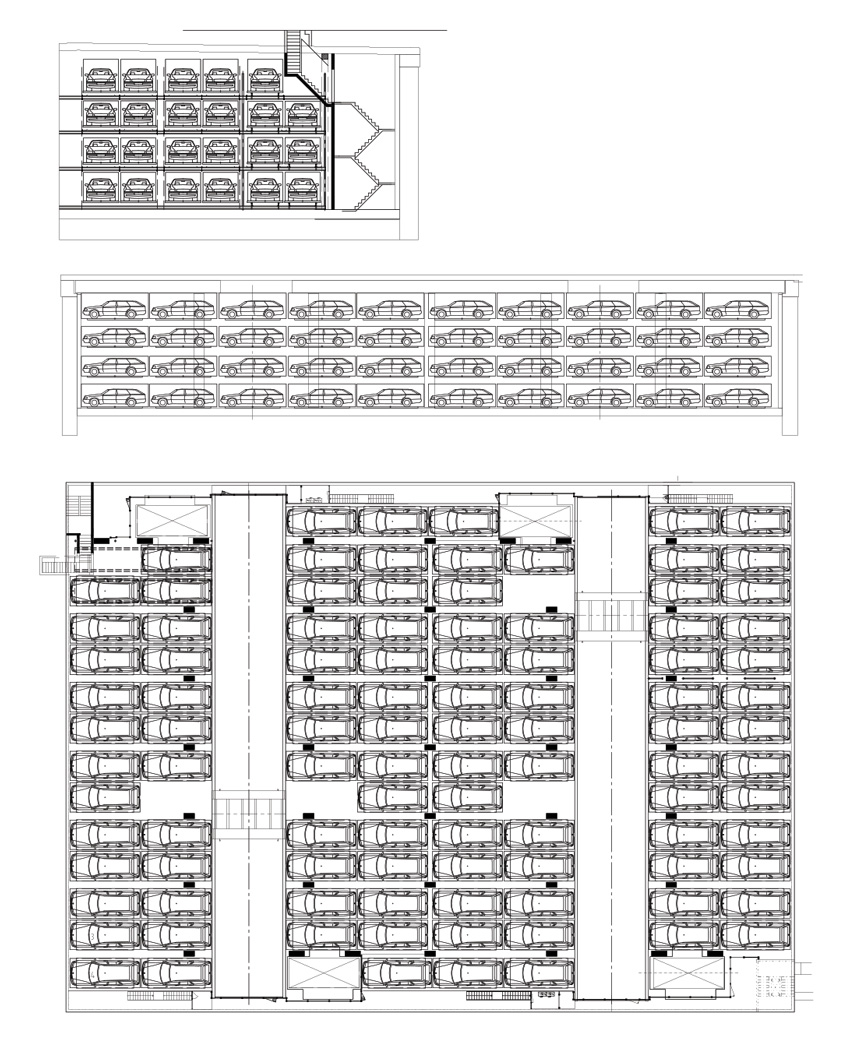The Evolution of Parking
Strict Parking Regulations
In crowded cities, developers are typically required to build at least one parking space per housing unit. In Los Angeles, for example, according to the Los Angeles County Department of Regional Planning, the city requires each single-family and two-bedroom home to have two designated parking spaces, while studio apartments require one parking spot.
According to an urban planning professor at University of California, Los Angeles, LA imposes the most big-city parking requirements by forcing projects to include more than one space per unit.1 This causes constraints for housing developers, as they need to find ways to maximize square footage in condensed areas.
Even without the imposed regulations, parking is a crucial piece of any development project. Convenient parking makes developed areas more appealing to people like customers, storeowners, and homebuyers, which plays a major factor in the success of the overall project.
Limited Land Available
Of America’s urban land, 48 percent is packed into five major cities: New York, Los Angeles, San Francisco, Washington, D.C., and Chicago. According to the U.S. Bureau of Economic Analysis, the combined value of urban land across the entire country is worth nearly $23 trillion. New York has the highest urban land value at $2.5 trillion, followed by Los Angeles at $2.3 trillion.2
With the high land values, it is extremely difficult to sacrifice land for parking spaces in densely populated cities. Across the United States, there are four parking spots for every car in existence, which adds up to a billion spaces. Many downtowns and cities devote between 50 and 60 percent of their real estate to parking, which could be put toward building more houses, stores, or parks. In order to fully leverage their space, cities like San Francisco are already beginning to redesign the use of their land. San Francisco has created a futuristic plan to take advantage of new and upcoming transportation options and minimize the amount of space that has been devoted to cars. By designing smaller streets and fewer parking options, San Francisco would be able to do more with their land, like build more houses to increase their population.
Emerging Innovations in Automated Parking Systems
With more people moving to big cities, developers need to provide sufficient parking to accommodate a growing number of vehicles despite tight budget constraints and already limited building footprint. Developers who are looking to make the maximum use of their space might consider a smarter, more innovative solution: automation.

Photo courtesy of Westfalia Technologies, Inc.
Automated parking systems park more cars in less space and offer cost, safety, and environmental benefits. The newest innovation is palletless parking systems.
Automated parking garages present developers with several benefits over traditional garages, including improved space utilization, reduced costs, lessened environmental impact, and a more luxurious user experience.
An automated parking system provides a stress- and worry-free environment with simple processes and short waiting times. Users of automated garages always park and retrieve their cars in well-lit, comfortable transfer areas. As these are the only areas that users interact with an automated garage, it is relatively inexpensive for developers to create a luxurious experience for users. Slick touchscreens and user-friendly mobile apps for retrieving their cars can make the whole user experience a comfortable, memorable one—an experience for which users are willing to pay.
One of the most attractive features of automated parking for developers is improved space utilization. A traditional parking garage is designed to allow cars enough room to safely move and park throughout the garage and for people to walk to and from their vehicles. However, an automated garage only needs enough room to accommodate the equipment operating within the garage.
Thus, automated garages require 60 percent less building volume and 40 percent less land than traditional garages.
How It Works: Types of Automated Parking Systems
Because the automated parking industry is growing and evolving quickly, there is not yet a standard type of system. Two main types of automated parking systems are often specified: pallet-based systems and the newer, more sophisticated palletless systems.
Pallet-Based Systems
Some pallet-based automated parking garages actually involve two systems working together. One system manages the movement of empty pallets, and the other manages the actual storage and retrieval of cars.

Photo courtesy of Westfalia Logistics Solutions Europe
This parking garage in Leifsgade, Copenhagen, uses a pallet-based system.
Palletless Systems
Additional space savings are possible through a palletless automated parking system. A palletless automated garage only requires the machinery that moves the cars but not a system to move and store pallets. This saves construction costs. It also is a faster and more efficient system.
One vendor of palletless automated parking systems uses a proprietary satellite technology that can adjust to the length of the car’s wheelbase, allowing the system to handle multiple car sizes. Once the vehicle is positioned in the transfer area, the driver and passengers have cleared the transfer area, and the vehicle is lowered to the storage level, the satellite drives under the car where the wheels are clamped, transporting the car onto a transfer car. Unlike pallet-supported systems, the vehicle is transported into the parking garage and positioned on a concrete deck. Building construction can be based on concrete or steel depending on location and construction costs.










